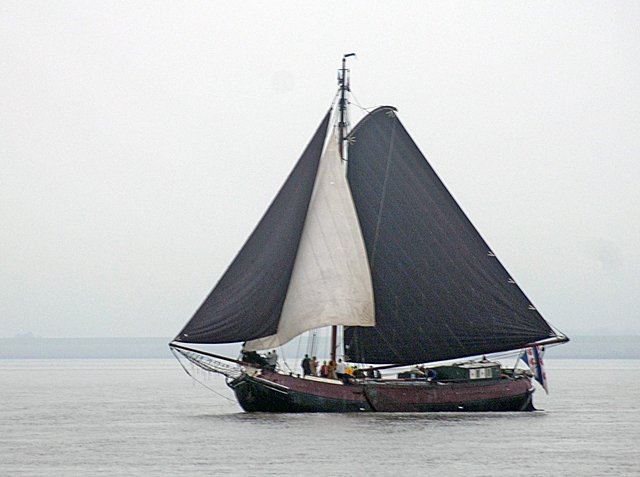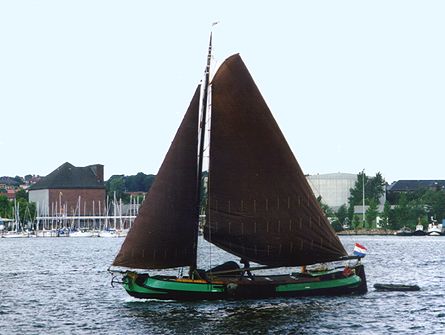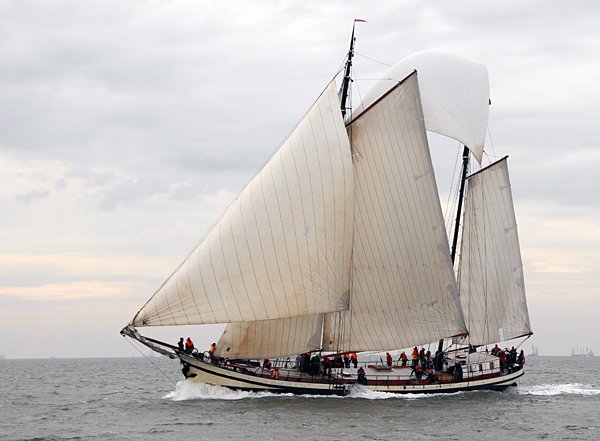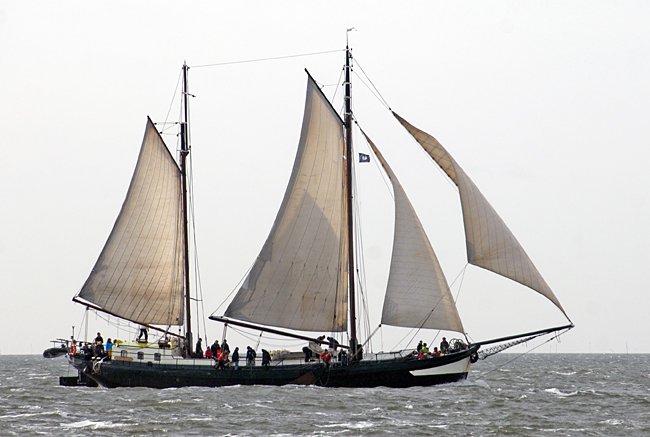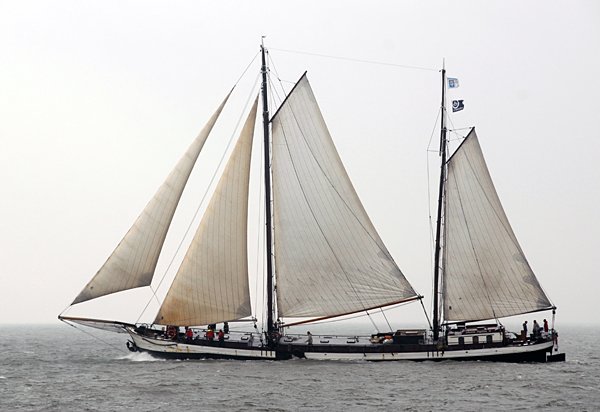Last update:
Kuiper-Brandarisrace
Sailing a regatta onboard of the Dutch Brown Fleet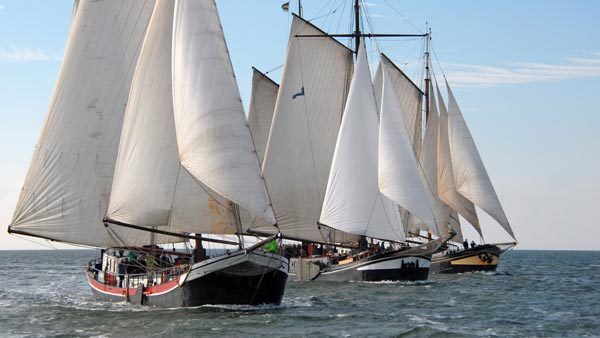
Klippers at the Brandarisrace
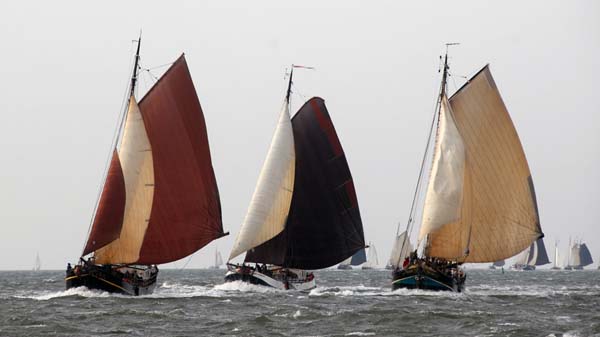
Tjalks at the Brandarisrace
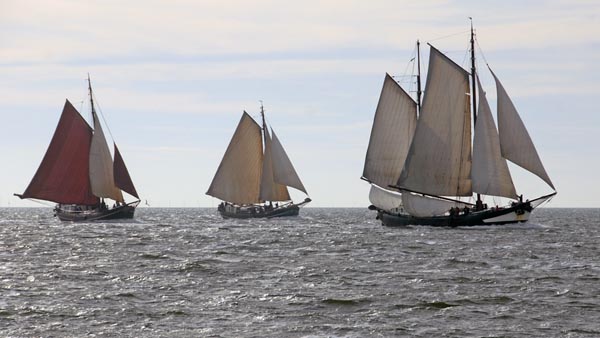
Klippers at the Brandarisrace
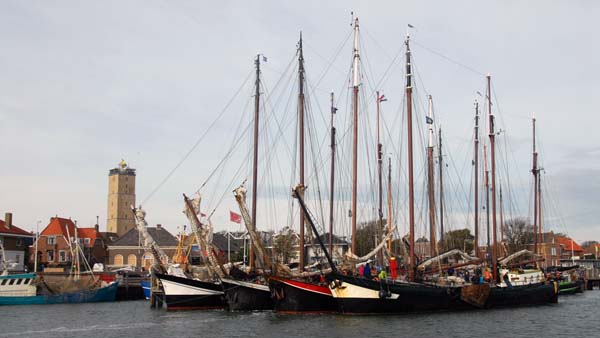
Habour of Terschelling
Brandaris is the name of the lighthouse on the Dutch North Sea island of Terschelling. It is also the oldest lighthouse in the Netherlands and he gave his name
to a regatta for flat-bottomed sailing ships. 1994 the Kuiper Brandarisrace took place on the occasion of the 400th anniversary of the lighthouse for the first time.
Since then the race has been organised between Harlingen and West-Terschelling each October. Due to the size of the port on the island, only a maximum of 80 sailing ships
can take part. These are divided into five classes for large and small clippers, Tjalks, Aaks and Skûtsjes as well as botters, cutters and other sailing ships.
The decisive factor for a regatta victory is in addition to the wind in this sea area of course the attention to the tides. The fact that the same sailing ships can often
be found in the winner lists is also largely due to the design and different sailing equipment of the ships and the ambition and professionalism of the respective crew.
The Dutch are almost all excellent sailors who know and assess their ships very well. Some then see the regatta as a sporting challenge. Others enjoy the day at sea
with great sailing impressions from the whole fleet. It applies to everyone a high degree of fairness and mutual consideration.
I have already seen the regatta several times on board of different ships in different classes. The sailing is always a lasting experience. If you are looking for an
opportunity to see traditional Dutch sailing ships and experience them in action, I can highly recommend the Kuiper Brandarisrace.
The long-term sponsor of the event is the Dutch insurance company Kuiper Verzekeringen BV.
The Dutch Brown Fleet
What is that, actually?As the Brown Fleet, in Dutch Bruine Vloot, one call the former cargo sailing ships which are used for passenger sailing in the Netherlands today. The denomination "Brown Fleet" refers to the colour of most of the sails, which was caused by the former preservation against mold and other moisture damage. Even today you can still see Dutch charter ships with brown sails. But the most of the sailing ships now have white sails made of modern materials.
What is a flat-bottomed sailing ships?
A flat-bottomed sailing ships simply has a flat bottom with a flat plate keel and a relatively shallow draft.
The hull has no bar keel. To keep the route without too much drifting the so-called side boards on both sides of the hull are used. The side boards are movably mounted
so that the draft can be changed.
Flat-bottom sailing ships were designed and built for the use in the wadden seas of the North Sea and the English Channel with changing water levels caused by the tide.
You can navigate large parts of these sea areas even at low tide and fall dry in the mudflats without lying on the side.
The rigging of the flat-bottomed ships is different and dimensioned according to the length of the hull. The gaff rigging is mostly used. The flat-bottom construction
of the hull is typical for the Ewer, Tjalk, Schokker or Thames Barge, for example.
Originally built as cargo ships, these ships are now mainly used as charter ships on the Dutch Wadden Sea and IJsselmeer and in the mudflats off Schleswig-Holstein, Germany.

